Organic modern aesthetics are typically created by designing modern, minimalistic spaces and then adding in natural and organic elements to make it feel warm and cozy. According to Jennifer Kelly Geddes, organic modern design “channels a light, airy aesthetic while combining the best of modern design, natural craftsmanship, and a dash of Scandinavian flair” (1). The picture below is an example of this aesthetic by James (2).

History and Influences
The organic modern aesthetic started from Frank Lloyd Wright in the 20th century. He created the concept of an organic building and introduced the concept of continuity. In this concept, he explains the design should fit into the landscape and natural environment around it. Wright’s concept was then developed to have a more midcentury modern twist by Alvar Aalto in the 1930s. Aalto focused on adding natural and organic shapes into furniture. Charles Eames, who was influenced by Aalto, then developed this style even more, creating a more modern aesthetic. However, this aesthetic was affected by World War II due to a lack of materials and became almost non-existent. The organic modern aesthetic became a more popular design style again recently due to more focus on sustainability and green designs (3).
Elements to the Organic Modern Aesthetic
When looking at elements that create this aesthetic, Stephanie Thornton Plymale says “While organic modern style is a nod to Scandinavian minimalism, it also borrows from mid-century modern and bohemian design to create inviting spaces that are warm, natural, and effortlessly sophisticated” (1).
Materials
Natural and sustainably produced materials are commonly used to make the space more earthy such as linen, cotton, bamboo, seagrass, and jute. A jute rug can be seen in the image below by West Elm (4). These materials are then paired with harder surfaces like reclaimed wood, recycled glass, stones, and metal that make the space have a more modern feeling. The reclaimed wood coffee table is also by West Elm (5).
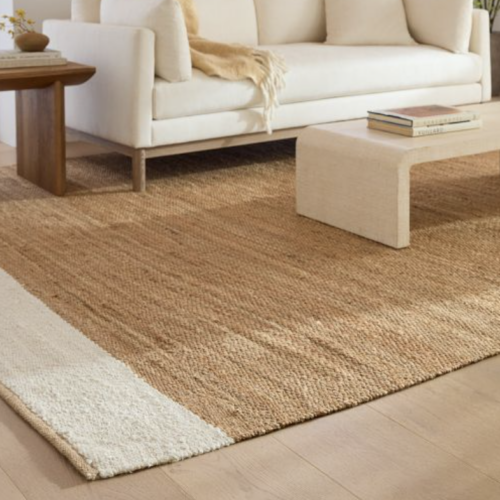
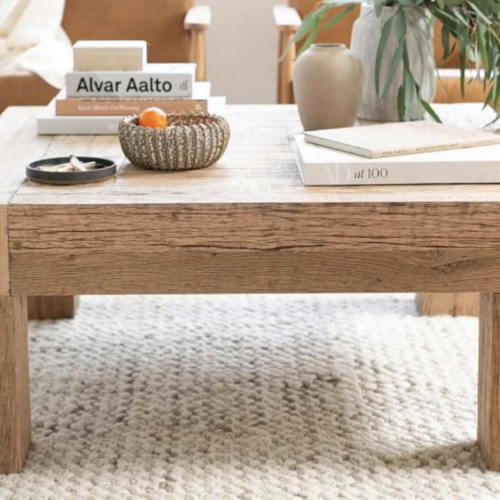
Color
More natural and neutral colors are typically used and they are usually all in the same palette with different shades that provide depth. Shades of white and gray are very common. Additionally, accent colors in the room are used to offset the more neutral look, but tend to be in earthy tones. Some yellow and blue accent colors can be seen in Tolbert’s (6) work below.
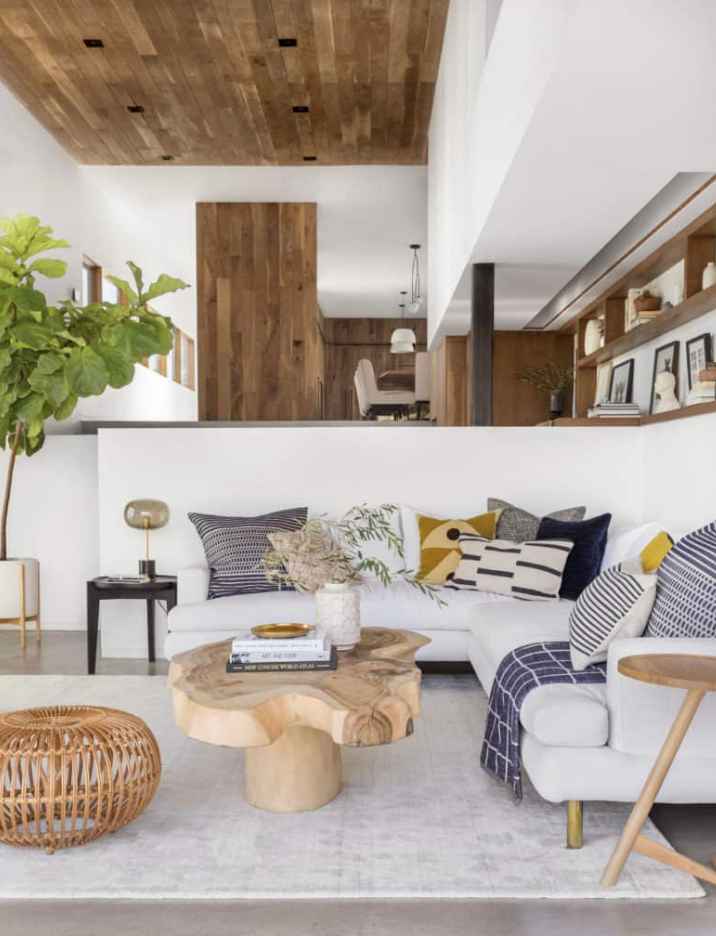
Form and Layers
The base of organic modern aesthetic is rooted in modern design with clean lines, open rooms, simple geometric shapes, and no clutter. Then, organic shapes and curved lines are added to create more interest in the room. It is also common to add in different textures such as soft throw blankets paired with a textured rug which adds more depth. These layers need to be added with restriction, making sure to not overcrowd the room. An example of some design pieces that can be used to add form and layers can be seen in The Sommer House collection (7).
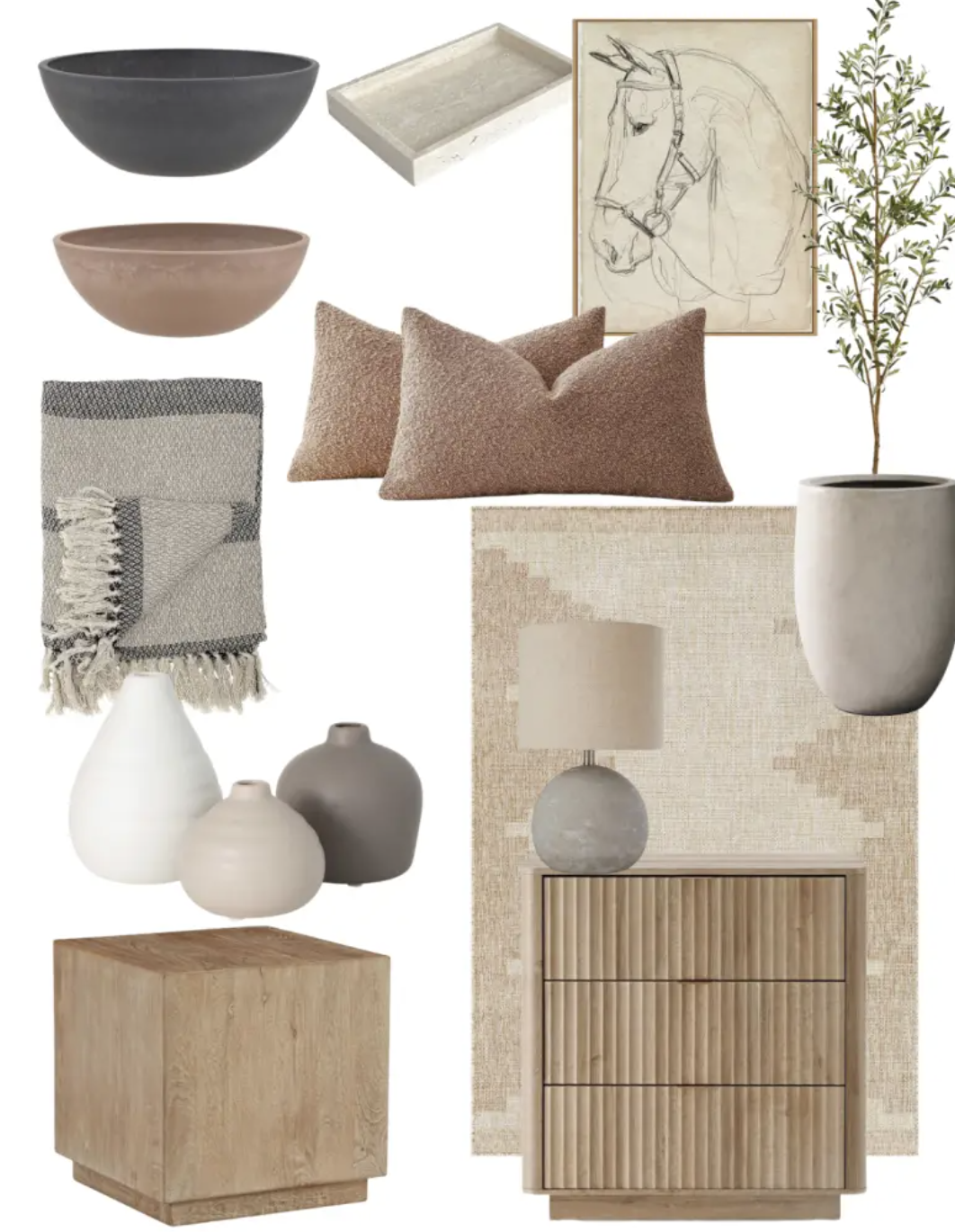
Natural Elements
It is important to add greenery to the space to bring some of the outdoors inside. It is common to have a large standing plant, hanging house plants, and smaller plants in organic shaped vases. The large standing plant in the background of the Designing Vibes (8) design creates a more outdoorsy feeling.
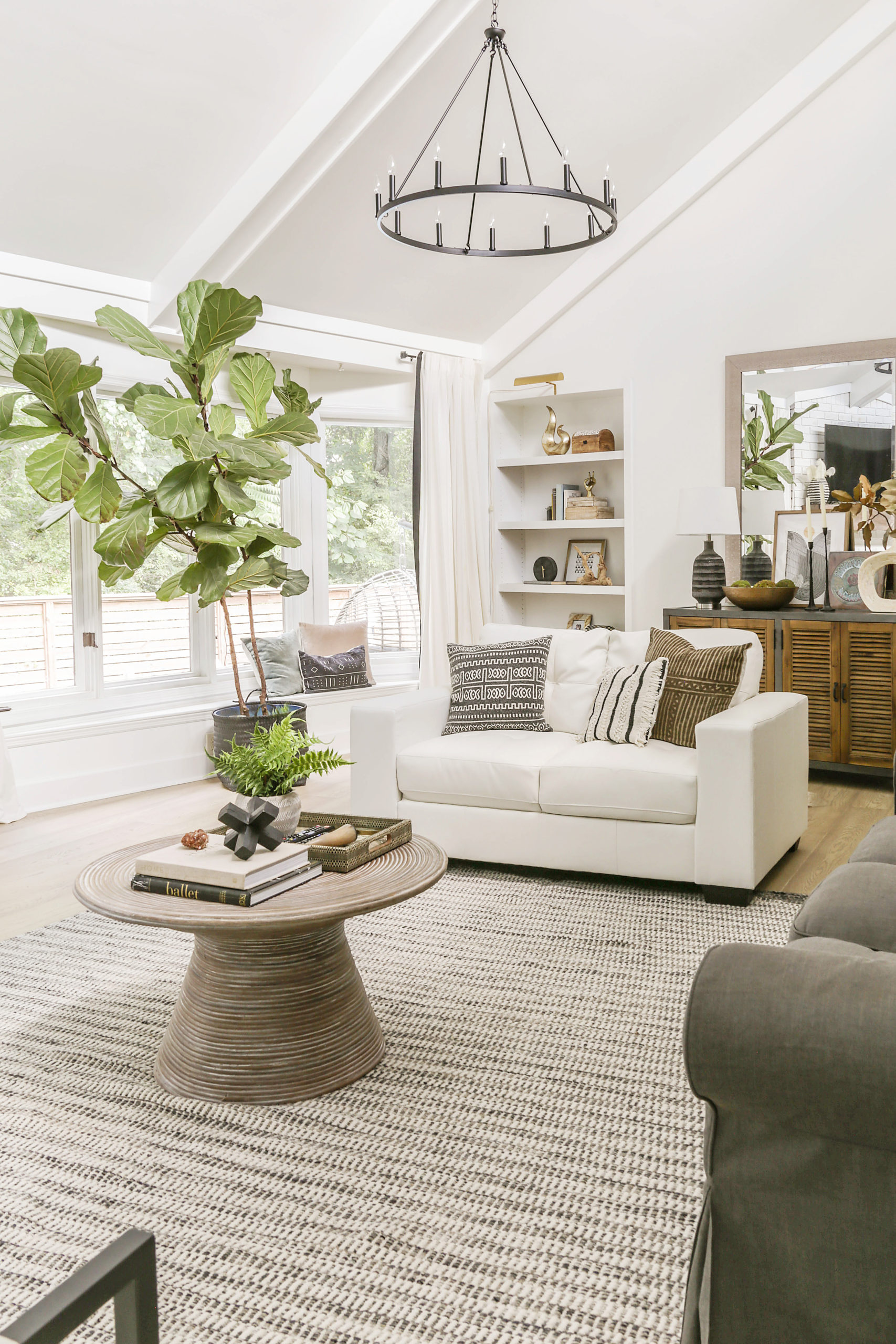
Conclusion
The organic modern aesthetic adds a warm and inviting twist to the colder modern, minimalist aesthetic style. The sharp lines and simple color palette are broken up with organic shapes, pops of color, and different textures to create a more softened space. This aesthetic is ideal if you are looking for a clean, sophisticated look that still has a warm and comforting feel to it!
Sources:
- Geddes, Jennifer Kelley. “What Is Organic Modern Style? Minimalism Meets Mother
Nature”. Realtor, 5 April 2019, https://www.realtor.com/advice/home-improvement/organic-modern-style/. Accessed 23 Jan, 2024.
- James, Harlow, 2019, https://www.heritageschoolofinteriordesign.com/organic-modern-design/.
- Heritage. “If You Love Modern Design but Still Want Your Home to Feel Cozy,
Consider Organic Modern Design!”. Heritage School of Interior Design, 30 Sept. 2019, https://www.heritageschoolofinteriordesign.com/organicmodern-design/#:~:text=History%20%26%20Inspiration&text=Organic%20Modern%20traces%20back%20to,of%20the%20famous%20Eames%20Chair). Accessed 23 Jan. 2024.
- West Elm, 2023, https://www.westelm.com/products/bordered-jute-rug-t6771/.
- West Elm, 2023, https://www.westelm.com/products/solid-reclaimed-wood-square-coffee-table-h8904/.
- Tolbert, Brady, 2019, https://www.heritageschoolofinteriordesign.com/organic-modern-design/.
- The Sommer Home, 2023, https://thesommerhome.com/organic-modern/.
- Designing Vibes, 2020, https://designingvibes.com/organic-modern-living-room-reveal/.
- Advice. “What is Organic Modern Style”. Style Files, 27 July 2022, https://www.cb2.com/blog/organic-modern-style/. Accessed 23 Jan. 2024.

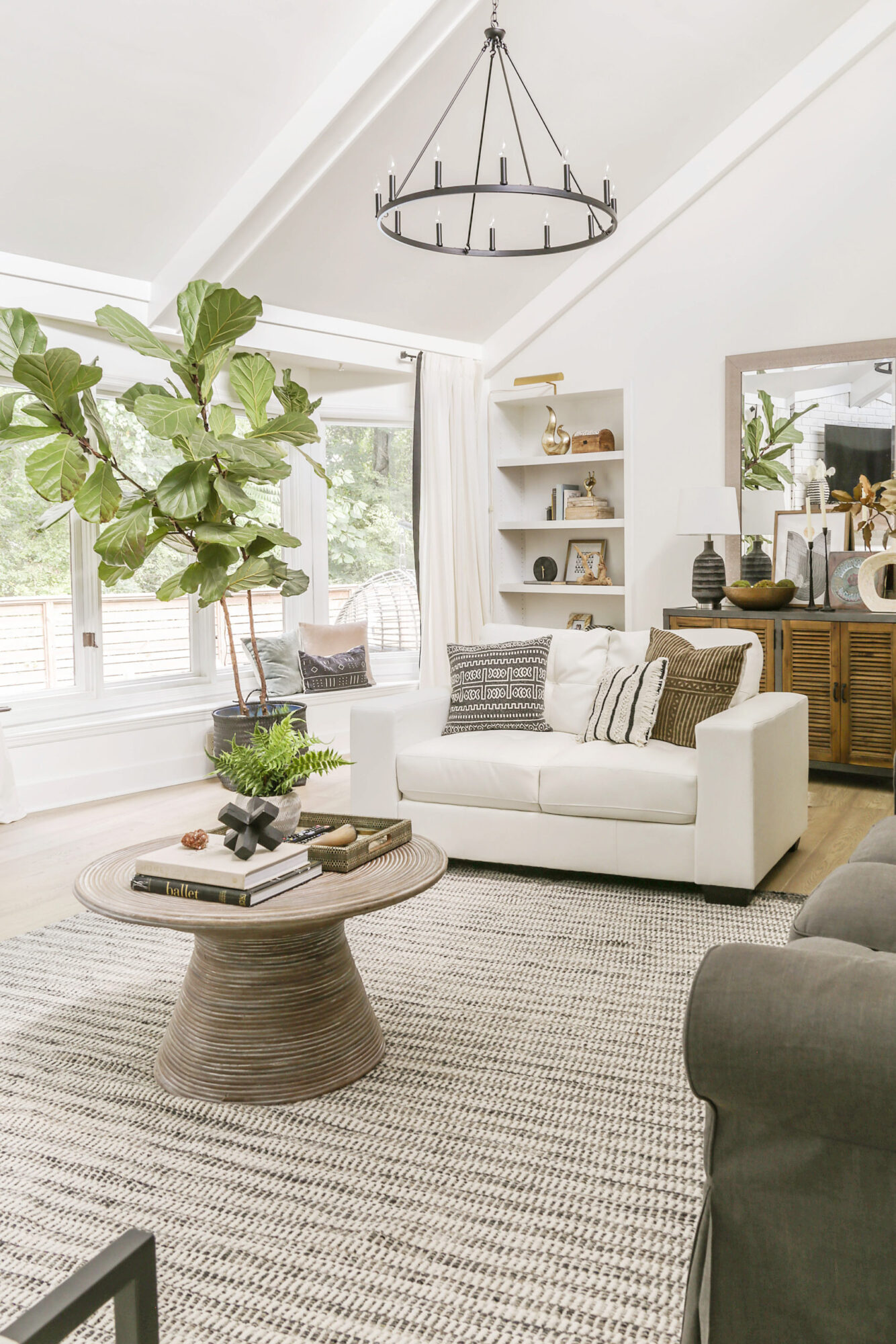
2 Comments. Leave new
One thing I find interesting about the organic aesthetic is the use of natural materials which add a sense of authenticity and timelessness while keeping it modern. I enjoyed reading and learning more about this aesthetic and think that it might tie nicely into other aesthetics. What other aesthetics might go well with the organic aesthetic?
Hi Matthew! I also love that organic design can tie into a lot of other aesthetics. One aesthetic that would pair well with the organic design is bohemian aesthetics. Boho ties in lots of organic elements with large leaved plants being a very common feature.